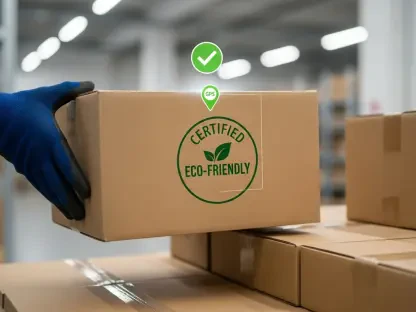As the e-commerce industry faces mounting pressure to meet consumer demands for swift and accurate deliveries, the introduction of packing automation is becoming increasingly pivotal. Businesses are investing in innovative technologies to maintain competitive edges, enhance their operational efficiency, and elevate customer satisfaction. This analysis explores the transformative impact of packing automation on e-commerce, evaluating trends, data, and future implications.
Revolutionizing E-commerce Through Technology
The evolution of e-commerce has been marked by various technological advancements that have redefined industry standards. Originally, online retail relied heavily on manual processes that often fell short of burgeoning consumer expectations for quick deliveries and flawless logistics operations. As a result, the industry has seen a transition toward adopting automatic systems, particularly in packing, to streamline these operations. Packing automation now stands at the forefront, promising to overhaul the traditional supply chain model by delivering speed, precision, and sustainability.
Examining Current Trends in Packing Automation
A notable example of packing automation’s success comes from UK Planet Tools, which strategically integrated Sparck Technologies’ CVP Impack auto-boxing system into its operations. This technology, capable of producing custom-made boxes that drastically reduce shipment volume and material requirements, highlights the efficiency benefits that businesses now capitalize on. The company witnessed significant reductions in both consumable costs and fulfillment times. As automation technology continues to advance, this case study sets a benchmark, demonstrating how businesses can enhance operational throughput while cutting costs.
Across the globe, differences in regional adoption rates of packing automation are evident. In markets with higher labor costs, such systems are quickly seen as indispensable. These regions have led the charge in adapting to and integrating these technologies, propelled by factors such as demand for expedited delivery services and efficiency-driven consumer markets. Concurrently, innovations including AI-driven tools and flexible automation solutions are emerging, addressing varied industry needs with adaptability.
Projections for E-commerce’s Automated Future
The future of packing automation promises further integration with cutting-edge technologies such as machine learning and robotics, paving the way for autonomous fulfillment centers. Regulations aimed at boosting sustainability in e-commerce operations will likely act as a catalyst in adopting automated systems. Modular solutions designed to scale efficiently foresee a scenario where automation remains a crucial component, meeting dynamic market demands while minimizing environmental footprints. Businesses are expected to invest in these systems to maintain sustainable growth.
Strategic Insights for Market Adaptation
For enterprises contemplating the shift to automation, embarking on this path requires careful consideration and strategic planning. A key tactic involves piloting automated systems to monitor the return on investment and refine processes accordingly. Management buy-in and workforce training are crucial for smooth integration, along with phased implementation to ensure seamless transitions. By harnessing these strategies, companies can not only sustain growth but also position themselves as leaders in the evolving digital marketplace.
Exploring the Impact of Packing Automation
Ultimately, the infusion of packing automation within e-commerce provides business operators with a robust framework to tackle modern logistical challenges. These advancements go beyond optimizing operations; they redefine customer experiences, establishing new industry standards for efficiency and satisfaction. Businesses that successfully navigate this technological evolution not only advance their growth trajectories but also set new benchmarks in the digital retail sector, reinforcing automation’s role as a pivotal element in the industry.









